Danube navigation is strongly dependent on reliable infrastructure and an adequate level of user information on the fairway. Since the endorsement of the Fairway Rehabilitation and Maintenance Master Plan for the Danube and its navigable tributaries in 2014, significant steps have been taken for its implementation. More than 75 million EUR have been invested through EU co-financed projects within the Connecting Europe Facility, the national Operational Programmes and the Instrument for Pre-Accession (IPA). Over the last two years, the operative use of new equipment for targeted rehabilitation and maintenance measures has gradually improved the physical fairway conditions as well as the information situation for the waterway users, especially on the Lower Danube.
Despite this fact, complementing the new equipment (e.g. purchasing dredging equipment) where required and securing sufficient and regular operational budgets at the national level remain to be the key challenges for the next years.
Upon invitation of EU Transport Commissioner Ms Adina Vălean, the Danube Ministers of Transport, with the exception of Hungary, reconfirmed their commitment to implement the Fairway Rehabilitation and Maintenance Master Plan. The Ministers acknowledged the need for further national and transnational actions as well as cross-border coordination procedures and agreed to step up fairway rehabilitation and maintenance efforts in the coming years by allocating the necessary national budgets as outlined in the National Action Plans and making full use of EU co-financing opportunities for the implementation of required measures. This renewed political commitment at the verge of the new financing period post 2020 will be of great value for the preparation of related activities in the coming years.
The present Danube Ministerial Conclusions also particularly acknowledge the valuable work of the joint Working Group of Priority Areas 1a and 11 of the EU Strategy for the Danube Region, which has already resulted in a first set of harmonised border control forms (DAVID forms) in the course of 2019. These forms have been successfully introduced in Hungary, the Republic of Croatia and the Republic of Serbia in February and March 2020 to lessen the administrative burden on waterway users. In their conclusions, the Danube Transport Ministers supported their further roll-out and digitalization along the Danube waterway.
Furthermore, the Ministers stressed the need to also pursue the implementation of important flanking measures, such as the development of land-side infrastructure (in particular mooring places) as well as the further greening of the inland fleet in order to reach the ambitious targets of “The European Green Deal”.
Priority Area 1a will continue to work for the implementation of the Fairway Rehabilitation and Maintenance Master Plan with the support of various national and transnational projects and continue to push for the application of the DAVID forms together with Priority Area 11.
Conclusions on effective waterway infrastructure rehabilitation and maintenance, June 2020.
(PDF, signature pages deleted | 1.8 MB)
Press release of DG MOVE: https://ec.europa.eu/transport/modes/inland/news/2020-06-29-danube-ministerial-conclusions_en


